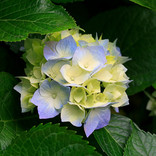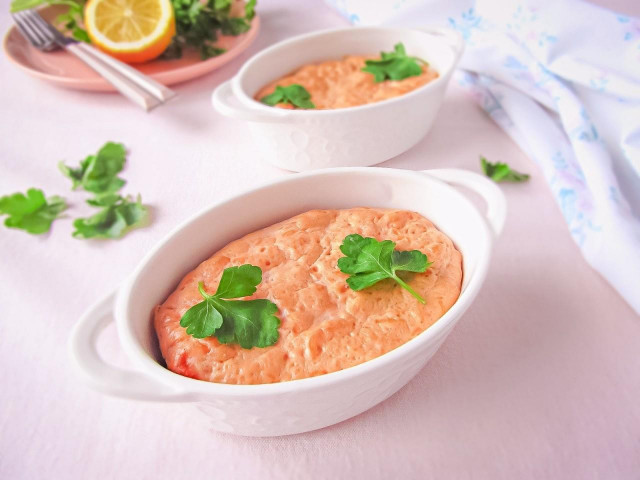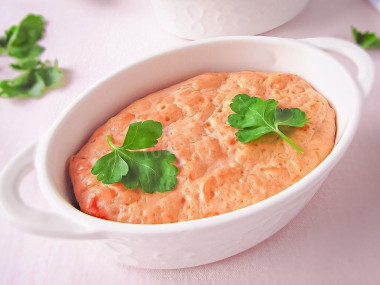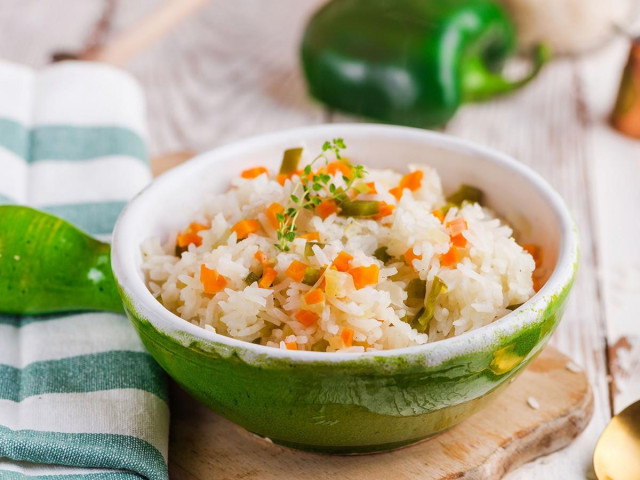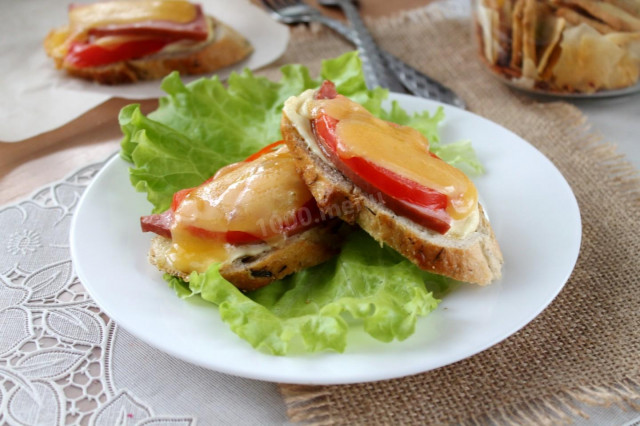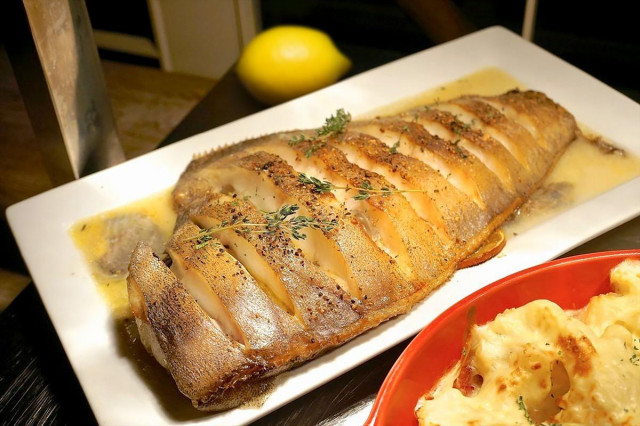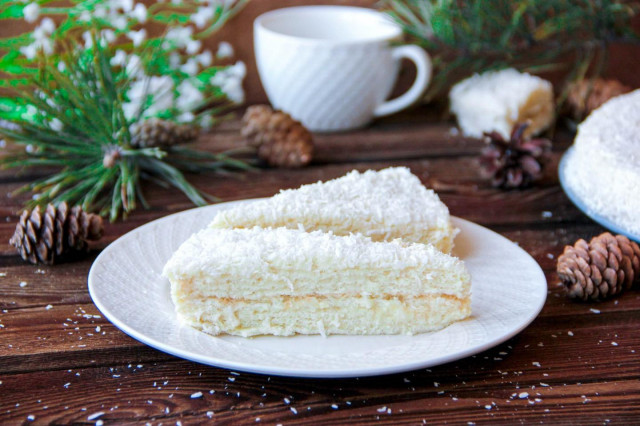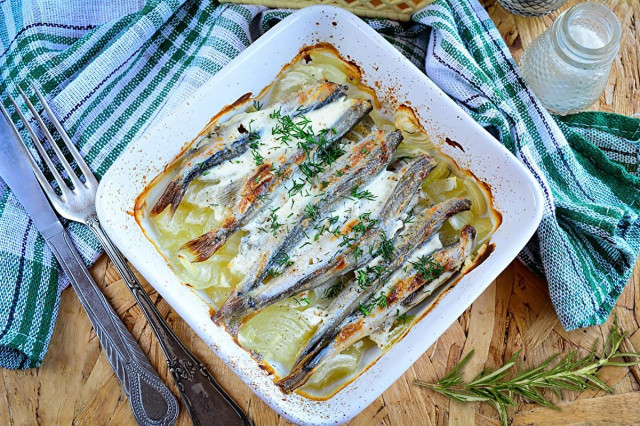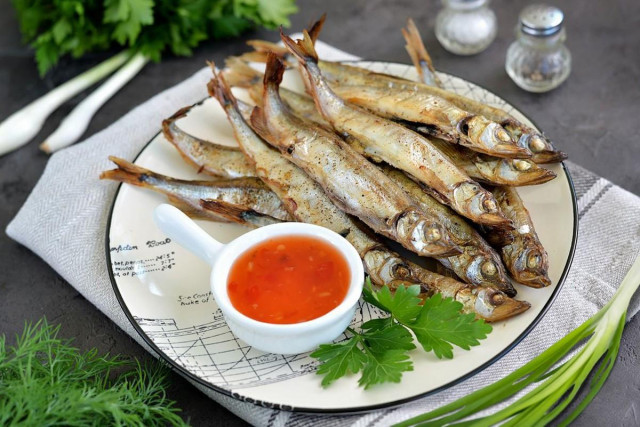Composition / ingredients
Step-by-step cooking
Step 1:
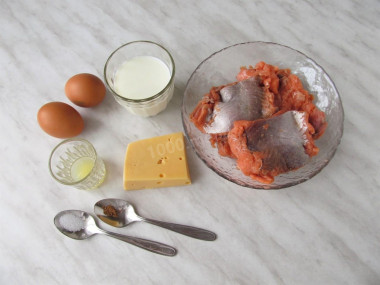
Ingredients.
Step 2:
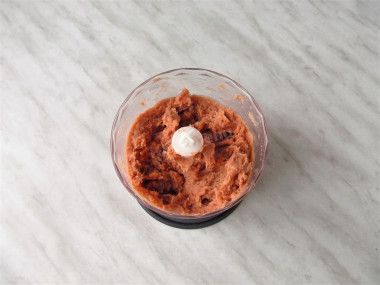
I used a pre-prepared salmon fillet for the souffle. If the fish is whole, then we wash it, dry it, cut off the head and tail, cut along the ridge, free it from skin and bones. Fillet cut into pieces and grind in a blender.
Step 3:
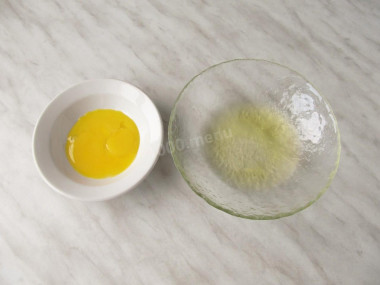
Eggs are carefully divided into yolks and whites. We put the proteins in the refrigerator.
Step 4:
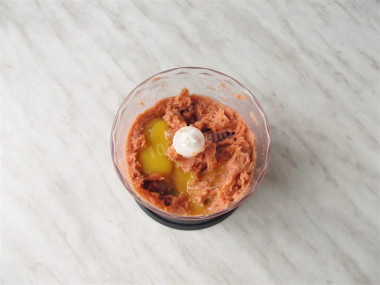
Add the yolks to the minced fish, whisk again.
Step 5:
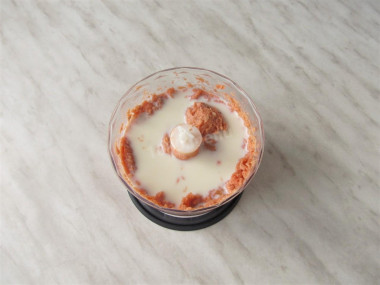
Pour in the cream, whisk a little. The result is a very tender minced meat of a puree-like consistency.
Step 6:
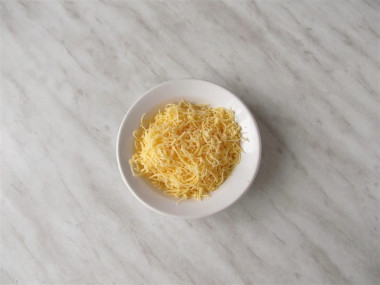
Grate the cheese on a fine grater.
Step 7:
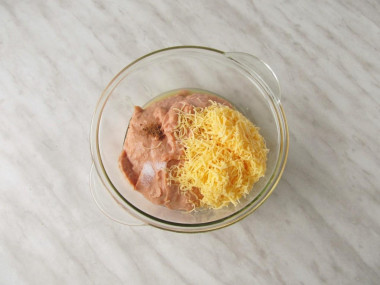
Combine the minced meat with grated cheese, lemon juice, add nutmeg and salt. Mix everything well.
Step 8:

Beat the cooled proteins at medium speed of the mixer to a dense, thick foam. In the process of whipping, add a pinch of salt.
Step 9:
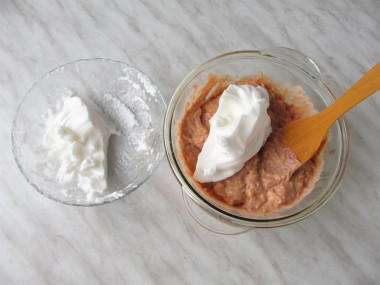
We introduce the whipped whites into the minced fish in parts, mix gently with a spatula.
Step 10:
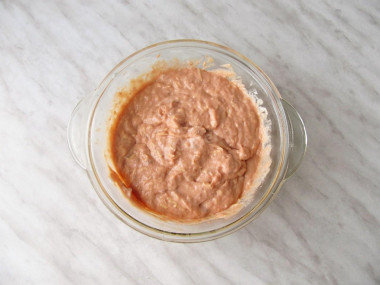
It turns out a tender, "airy" fish mass.
Step 11:
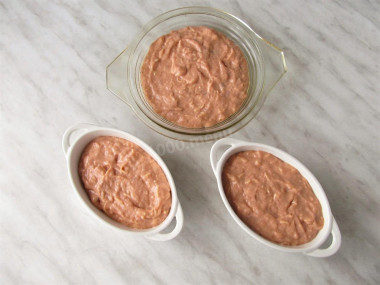
Lubricate the prepared molds with vegetable oil, carefully spread the minced meat. During baking, the souffle will increase in volume, so we fill the forms with 2/3 of their height.
Step 12:
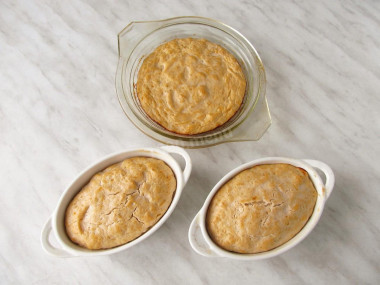
Bake the souffle in a preheated 180 degree oven for 25-30 minutes until lightly browned. During cooking, the oven should not be opened so that the souffle does not settle.
Step 13:
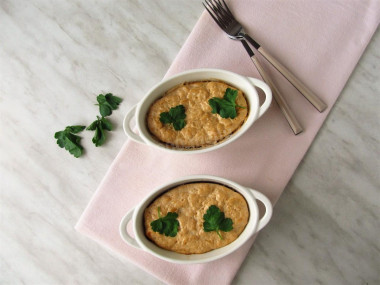
It is better to serve the finished souffle right away while it holds its shape. Enjoy your meal!
The quality of the souffle depends on how the whites are whipped. To get a lush protein foam, you need to take fresh eggs and be sure to exclude even a drop of yolks from getting into the proteins. Then the proteins will be well whipped.
Just cooked hot souffle is very tender, after cooling it will have a denser structure. A steamed souffle will be especially tender.
Any red fish is suitable for making souffle. You can, of course, use any fish, but, in my opinion, the souffle turns out to be tastier from red fish.
Fish souffle can act as an independent dish or as an addition to any side dish of cereals or vegetables.
Caloric content of products possible in the dish
- Buttermilk - 36 kcal/100g
- Cream of 20% fat content - 300 kcal/100g
- Cream of 10% fat content - 120 kcal/100g
- Cream - 300 kcal/100g
- Chicken egg - 157 kcal/100g
- Egg white - 45 kcal/100g
- Egg powder - 542 kcal/100g
- Egg yolk - 352 kcal/100g
- Ostrich egg - 118 kcal/100g
- Dutch cheese - 352 kcal/100g
- Swiss cheese - 335 kcal/100g
- Russian cheese - 366 kcal/100g
- Kostroma cheese - 345 kcal/100g
- Yaroslavsky cheese - 361 kcal/100g
- Altai cheese 50% fat content - 356 kcal/100g
- Soviet cheese - 400 kcal/100g
- Cheese "steppe" - 362 kcal/100g
- Uglich cheese - 347 kcal/100g
- Poshekhonsky cheese - 350 kcal/100g
- Lambert cheese - 377 kcal/100g
- Appnzeller cheese with 50% fat content - 400 kcal/100g
- Chester cheese with 50% fat content - 363 kcal/100g
- Edamer cheese with 40% fat content - 340 kcal/100g
- Cheese with mushrooms of 50% fat content - 395 kcal/100g
- Emmental cheese with 45% fat content - 420 kcal/100g
- Gouda cheese with 45% fat content - 356 kcal/100g
- Aiadeus cheese - 364 kcal/100g
- Dom blanc cheese (semi-hard) - 360 kcal/100g
- Cheese "lo spalmino" - 61 kcal/100g
- Cheese "etorki" (sheep, hard) - 401 kcal/100g
- White cheese - 100 kcal/100g
- Fat yellow cheese - 260 kcal/100g
- Altai cheese - 355 kcal/100g
- Kaunas cheese - 355 kcal/100g
- Latvian cheese - 316 kcal/100g
- Limburger cheese - 327 kcal/100g
- Lithuanian cheese - 250 kcal/100g
- Lake cheese - 350 kcal/100g
- Gruyere cheese - 396 kcal/100g
- Salt - 0 kcal/100g
- Lemon juice - 16 kcal/100g
- Nutmeg - 556 kcal/100g
- Red Fish - 191 kcal/100g
